You gotta love how birchleaf spirea, Spiraea betulifolia, grows as a perennial within the USDA Hardiness Zones that will expertise -40°F temperatures within the winter.
And the best way that it produces copious clusters of blooms all spring, engaging inexperienced or yellow leaves in summer season, and a kaleidoscope of colourful foliage in autumn can also be positive to be admired.
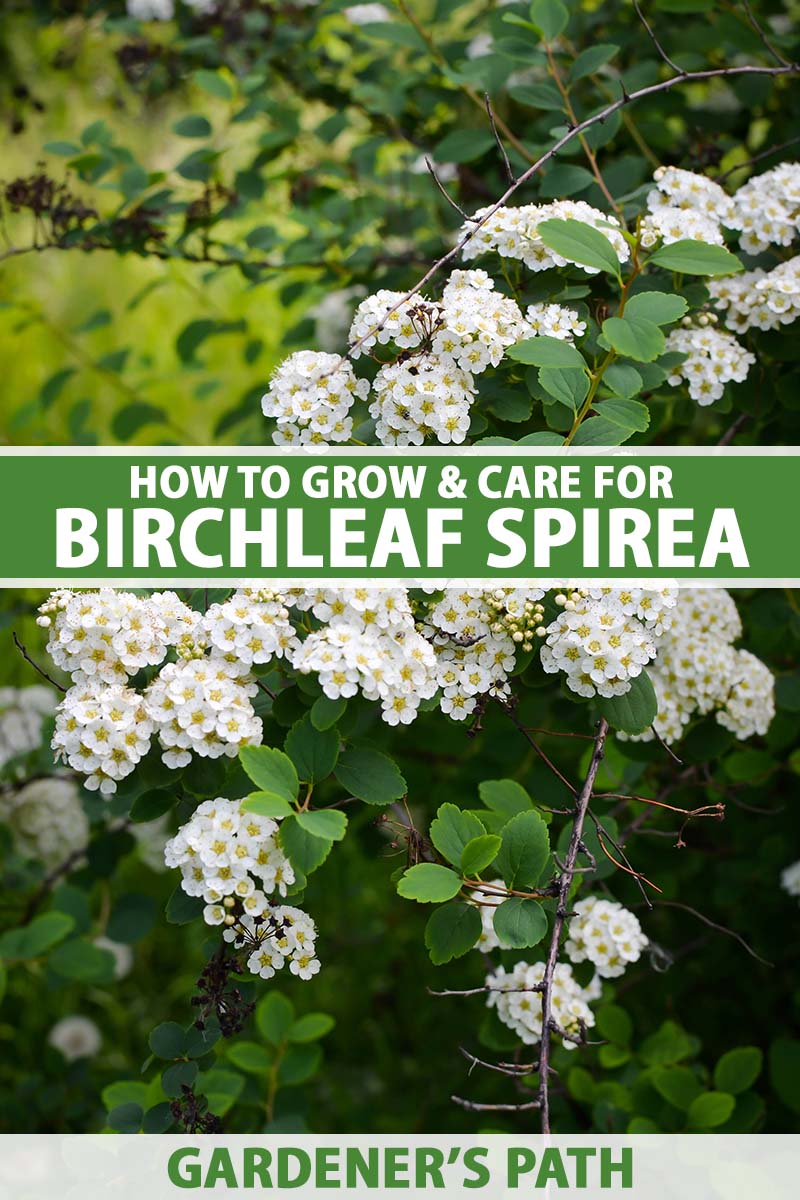
We hyperlink to distributors that will help you discover related merchandise. In the event you purchase from certainly one of our hyperlinks, we might earn a fee.
Talking of optimistic reactions, bees love birchleaf spirea’s nectar-rich blooms, and it’s possible you’ll spy hummingbirds sipping from the flowers too in case you resolve to develop this useful decorative shrub in a border, mattress, or container.
I current this rising information that will help you resolve if this number of spirea is an efficient match to your panorama design and the restrictions of your backyard or the world the place you develop decorative vegetation.
With affection and good humor, I’ll cowl these matters:
What Is Birchleaf Spirea?
This mounding shrub is among the 100 distinctive species throughout the Spiraea genus.
Hear up, gardeners in northern climates: This exceptionally hardy decorative shrub provides three-season curiosity in USDA Hardiness Zones 3 to 9, relying on the cultivar.
Thought-about a dwarf spirea, it grows from about two to 4 ft tall, relying on the range, and spreads about that huge with a mounding behavior.
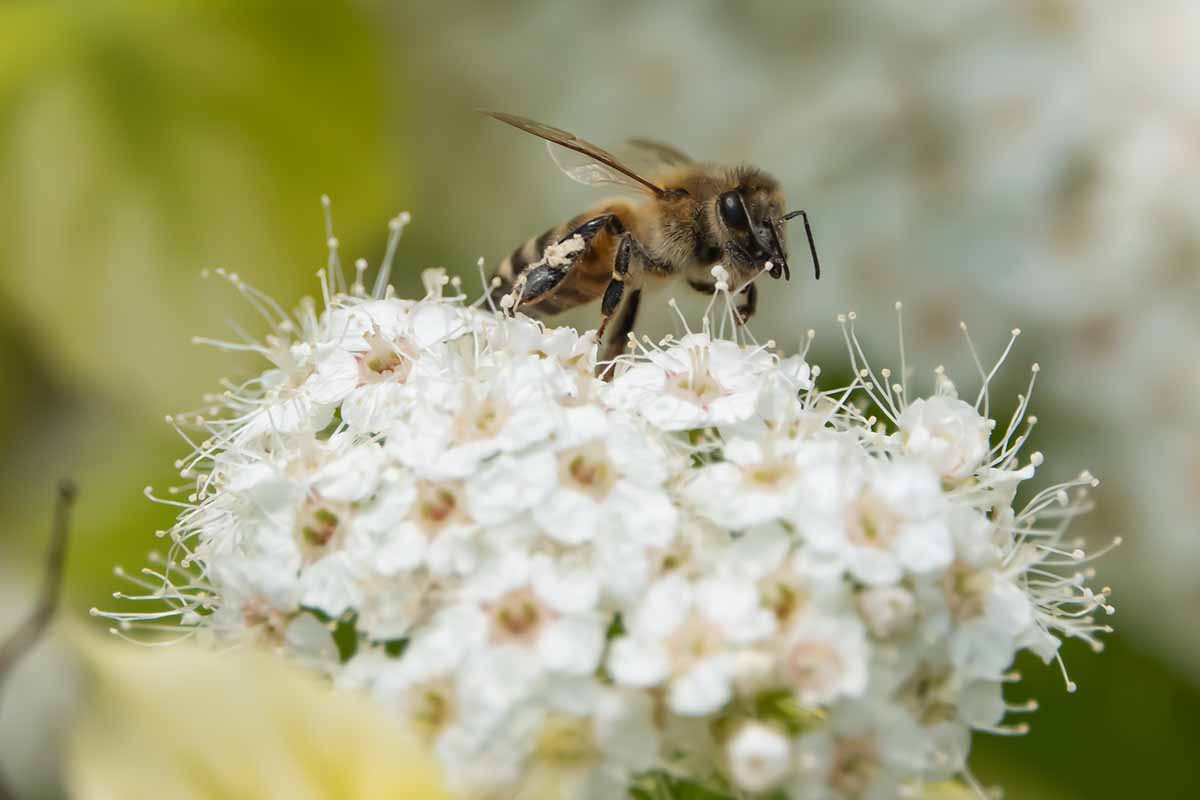
Clusters of white or pink flowers bloom all through the spring, with lovely leaves exhibited all through the summer season.
Whereas different spirea species have oval-shaped leaves, S. betulifolia produces two-inch spherical or egg-shaped leaves that resemble birch foliage, therefore the identify.
These leaves are usually deep inexperienced, lime inexperienced, or yellow in spring and summer season, relying on which birchleaf selection you’ve chosen.
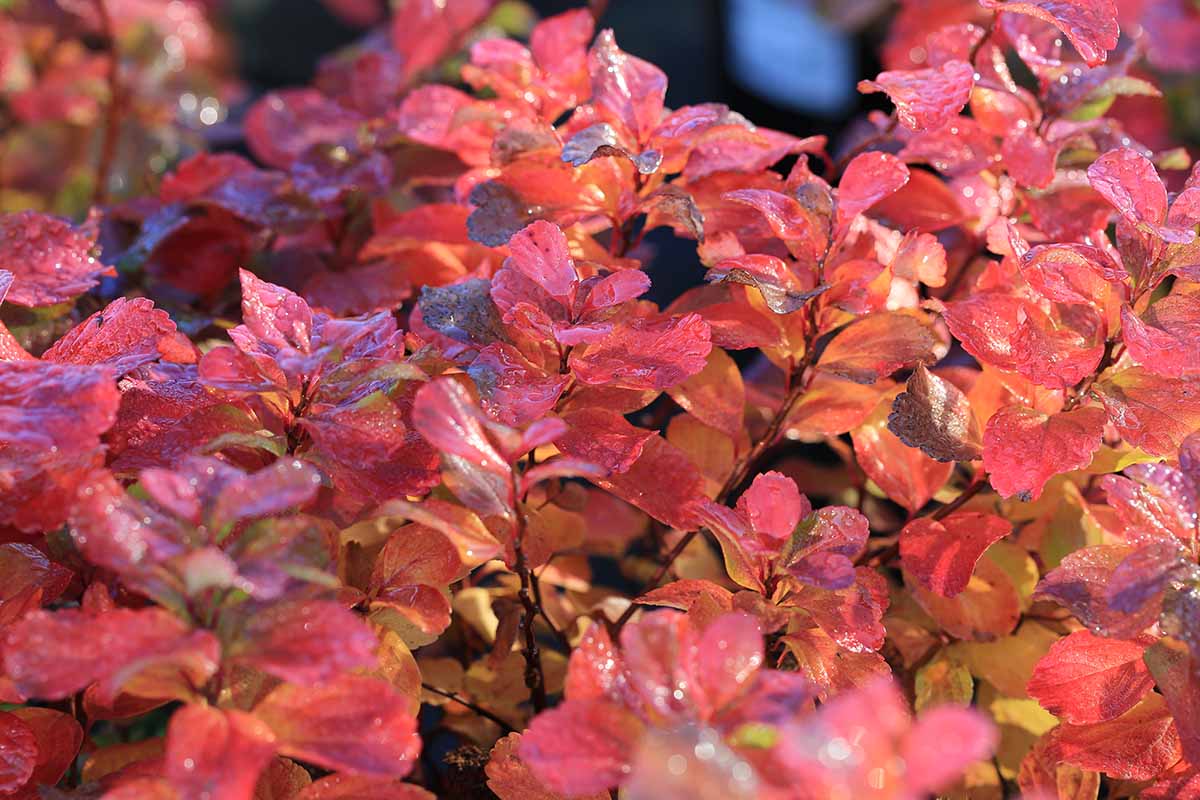
In fall, they tackle a complete new look, sporting foliage in a kaleidoscope of colours starting from pink to chartreuse, burgundy to bronze, orange to lime inexperienced, and lots of in between mixtures.
This species is native to Japan and different elements of East Asia. In the event you’ve seen it tagged as a local plant within the US, that’s solely true of two varieties.
S. betulifolia var. corymbosa, additionally known as shinyleaf meadowsweet, is native to the japanese US starting from Alabama and Georgia north to Pennsylvania, whereas S. betulifolia var. lucida, or shinyleaf spirea, is native to western North America from Oregon, Wyoming, and Minnesota north to Saskatchewan and British Columbia.
However don’t fret in case you aren’t rising a kind of varieties in a kind of areas. That is nonetheless a useful species for wildlife and the native setting.
It supplies erosion management and nectar for pollinators, and is drought tolerant as soon as vegetation are established. Birchleaf spirea additionally grows in poor soil and is definitely propagated from cuttings, so it’s economical, too.
Whether or not you’re bought on the advantages or nonetheless deciding, let’s take a look at what’s required for the expansion and care of this versatile, lovely flowering shrub.
Birchleaf Spirea Propagation
Like the opposite Spiraea species in style with gardeners and landscapers, S. betulifolia will be propagated from softwood or hardwood cuttings.
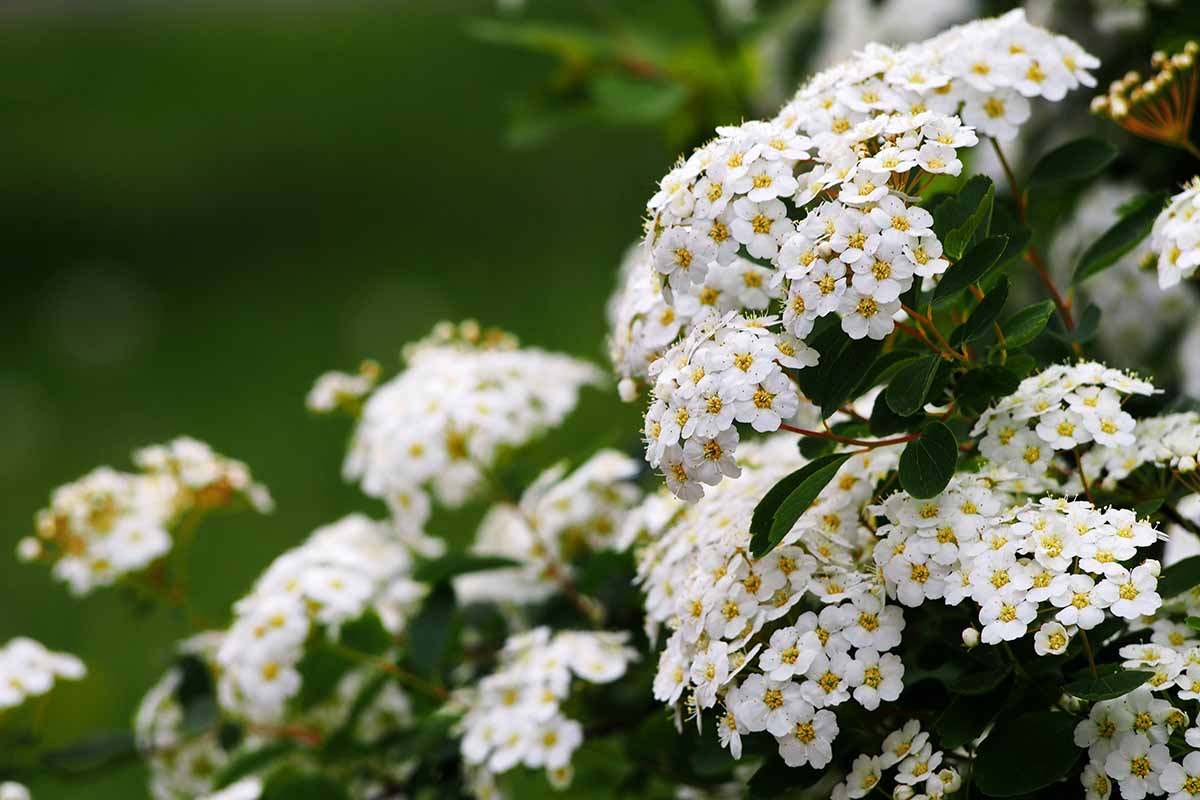
Or, you may begin a brand new shrub through layering. To layer, you bend a protracted stem to the bottom and weigh it down till it roots, then sever the brand new plant from the father or mother shrub.
You’ll be able to discover detailed directions on all three spirea propagation strategies in our information.
If you are going to buy a shrub on-line or from an area nursery, you may transplant it right into a container with double the diameter and depth of the basis ball. Guarantee it has drainage holes and that present a well-draining potting combine.
To transplant into the bottom, dig a gap in well-draining soil one and a half occasions as huge as the present container and twice as deep.
Ease the shrub into the opening so the basis ball is even with the soil floor, after which backfill with extra well-draining soil.
Water effectively. Apply a two-inch layer of mulch across the base to discourage weeds and preserve water.
Be taught extra about utilizing mulch for low-maintenance gardening in our information.
As soon as the vegetation are within the floor, your work is generally executed. Arising, I’ll go over rising methods and upkeep chores, however they’re not in depth.
The way to Develop Birchleaf Spirea
Getting birchleaf spirea off to begin is pretty easy. It’s in no way choosy.
Whereas it prefers wealthy loam, It is going to develop in chalk, sand, or common loam so long as it’s well-draining. Add advantageous grit or landscaping sand as wanted to advertise drainage.
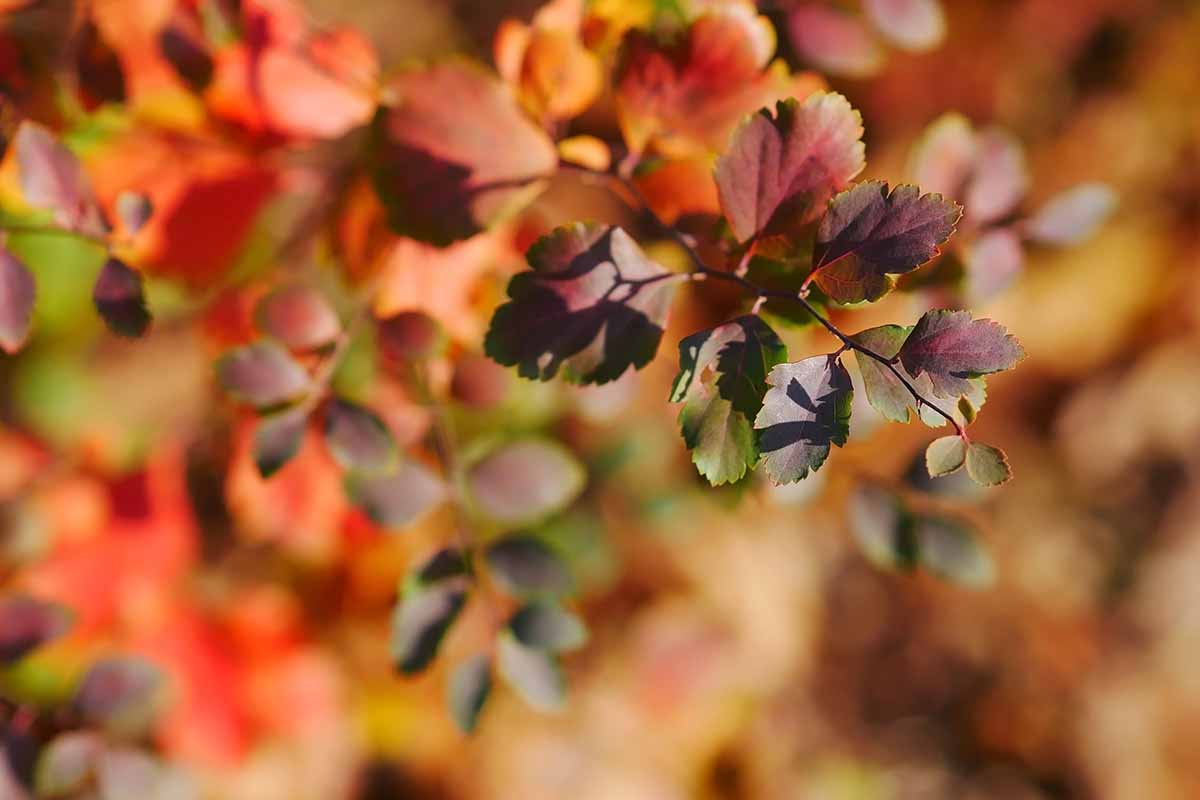
Ideally, you’ll additionally be capable to present a full solar spot for these sun-lovers, not less than six hours per day. They’ll do okay partially solar, however they received’t bloom as a lot and the branches in all probability received’t get as full.
They recognize supplemental water however gauge the necessity by checking how dry the soil is as a substitute of watering on a schedule.
These shrubs choose a deep drenching solely as soon as the soil is almost dry, which you’ll be able to decide with a soil moisture meter or by plunging your pinky finger just a few inches down within the filth.
Overwatering or permitting the shrubs to face in pooled water can promote root rot.
It’s a good suggestion to fertilize birchleaf spirea in early spring, however solely fertilize annually. Use an all-purpose, slow-release shrub meals to see spirea by means of the blooming and colourful foliage seasons.
Decide up some extra suggestions for rising all varieties of spirea in our basic information.
Rising Ideas
- To maximise blooming and promote plant well being, develop in full solar if doable.
- Plant in well-draining soil.
- Apply all-purpose slow-release fertilizer simply annually, in early spring.
- Water totally however solely when the soil is dry to keep away from the chance of lethal root rot.
Pruning and Upkeep
Once you’ve planted S. betulifolia in a outstanding spot the place patio diners or front-door guests might be wanting proper at it, it’s possible you’ll wish to deadhead the flowers.
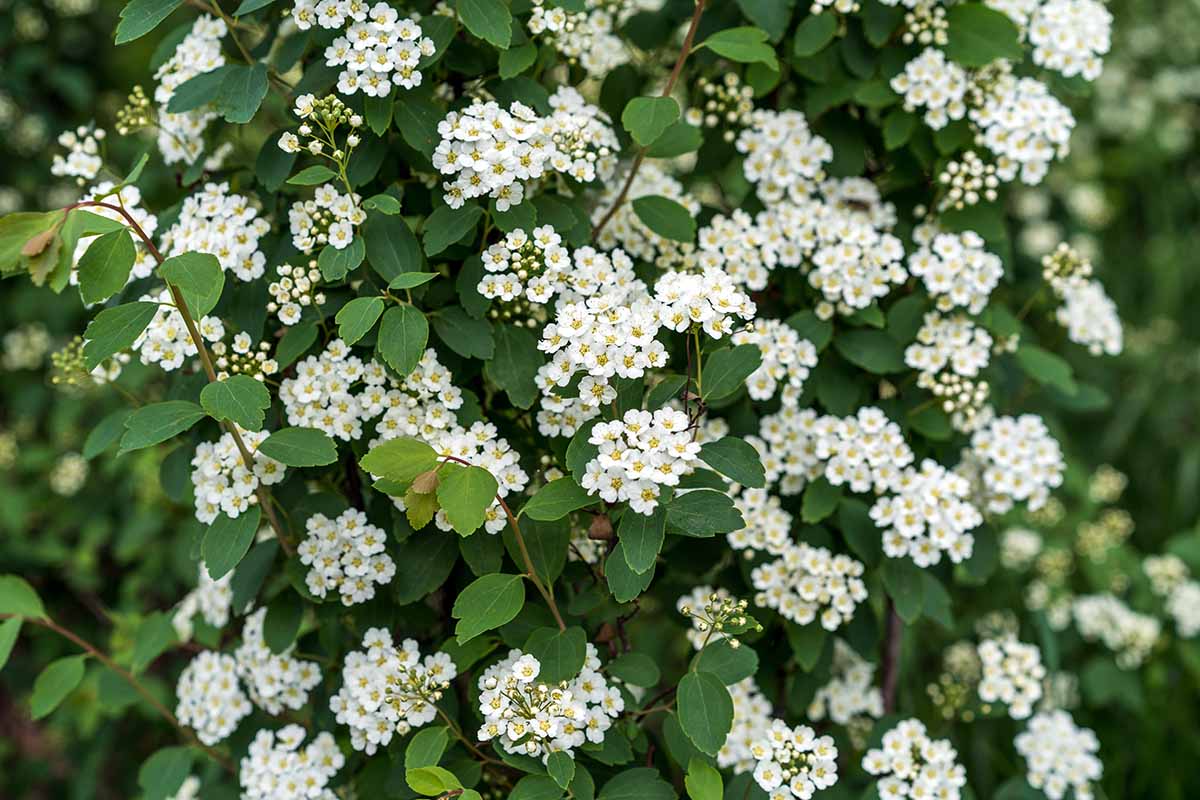
It may be slightly time-consuming, however moreover making these spring-blooming shrubs look extra engaging, deadheading will promote a second spherical of blooms that would proceed into early summer season.
Pruning can also be a good suggestion. It could appear counterintuitive, however you’ll wish to prune in late winter or early spring, simply because the stems are actually getting going.
Clip the budding branches to inside about 4 inches of the bottom. Sure, I do imply so that you can clip all of the stems. The buds on the backside will leaf out and the shrub will come again stronger and fuller than ever.
Vegetation rising in containers would require one other upkeep chore. Despite the fact that these shrubs will survive the winter months in Zones 3 to 9 or 4 to eight, relying on the cultivar, it’s not good for the potted vegetation to consistently freeze and thaw.
As soon as freezing climate units in, prune the highest half of the branches and transfer the pots to a protected location with robust gentle. A storage or shed with substantial gentle from a window is right.
Because the climate begins to heat in spring, transfer the containers again outside, however solely after spending every week getting them acclimated to growing quantities of daylight and totally different temperatures.
Discover extra information on caring for spirea shrubs in winter in our information.
Birchleaf Spirea Cultivars to Choose
Between the brand new cultivars with contemporary autumn foliage colours and the outdated favorites with the extra conventional bronze, pink, or orange fall leaves, there are enjoyable selections among the many obtainable S. betulifolia varieties. Test these out:
Gold Tor
You glow, woman! Glow Lady® ‘Gold Tor’ is a Confirmed Winners choice from the Glow Lady collection.
Even its flower buds look freshly made up in a satisfying palette, reddish earlier than opening to disclose vibrant white blooms in spring.
‘Gold Tor’ is hardy in Zones 3 to eight. Its golden spring and summer season foliage makes a beautiful hedge that may develop three to 4 ft tall with a mature unfold of three to 5 ft.
In fall, the foliage turns orangey-red to purple.
This birchleaf spirea cultivar has been bred to develop effectively partially shade with afternoon solar safety in hotter climates, or in full solar in northern locales.
Glow Lady® ‘Gold Tor’ is offered in a two-gallon container from Inexperienced Promise Farms through Amazon.
Pink Sparkler
Lengthy after the summer season fireworks are completed, Pink Sparkler™ enlivens the autumn panorama when its summertime inexperienced leaves change to a putting pink-burgundy for fall.
After all, this shrub is sparkly within the spring, too, with giant, spherical, pink flower heads that seem up and down the stems on the leaf axis. When it reblooms later within the season, count on tinier blossoms.
This cultivar grows three to 4 ft tall and spreads three or 4 ft huge. Bred in France, it’s hardy in Zones 3 to eight.
In the event you’ve been searching for a flowering shrub to enhance white or pink dogwood, right here you go.
Pink Sparkler™ is obtainable from Nature Hills Nursery.
Celebrity
‘Celebrity’ produces show-stopping pink-purple flower clusters all spring lengthy.
When the blooms are completed, count on a full complement of darkish inexperienced foliage by means of the summer season, giving technique to bronzed leaves in autumn.
Hardy in Zones 3 to eight, ‘Celebrity’ is a pure selection for individuals who reside in additional chilly areas.
It grows about three ft tall and spreads 4 ft huge, making this cultivar a sensible choice for mass planting.
‘Celebrity’ is offered in one-gallon pots from EZ Rising Vegetation through Amazon.
Managing Pests and Illness
S. betulifolia has few points with pests or ailments, which is a part of its easy-care attraction.
I’m not saying rabbits or deer would by no means sneak a nibble of the leaves, particularly at peak tenderness in early spring, however birchleaf spirea isn’t certainly one of their most well-liked meals.
Regardless of the minimal menace, it is best to examine your vegetation for pest infestation commonly, particularly earlier than shifting container shrubs for the winter.
Discover extra information on stopping, detecting, and controlling the commonest culprits in our aphid, scale, and spider mite guides.
Since S. betulifolia is a member of the Rosaceae or rose household, it’s not shocking that it could contract a few of the identical ailments, although they’re pretty uncommon.
Fireblight, leaf spot, and powdery mildew may trigger issues, so be looking out for these.
Root rot presents a extra substantial menace.
I like to recommend paying shut consideration to preventive measures together with considered watering, spacing that enables air circulation, and offering well-draining soil.
Root rot is the more than likely foe to kill your spirea outright, and that may be a disgrace when it’s so simply prevented.
Greatest Makes use of of Birchleaf Spirea
With birchleaf spirea delivering three-season curiosity with minimal care, it could beautify dozens of spots within the panorama.
Only a few of the locations it stands out embrace backyard beds, borders, walkways, and patio containers.
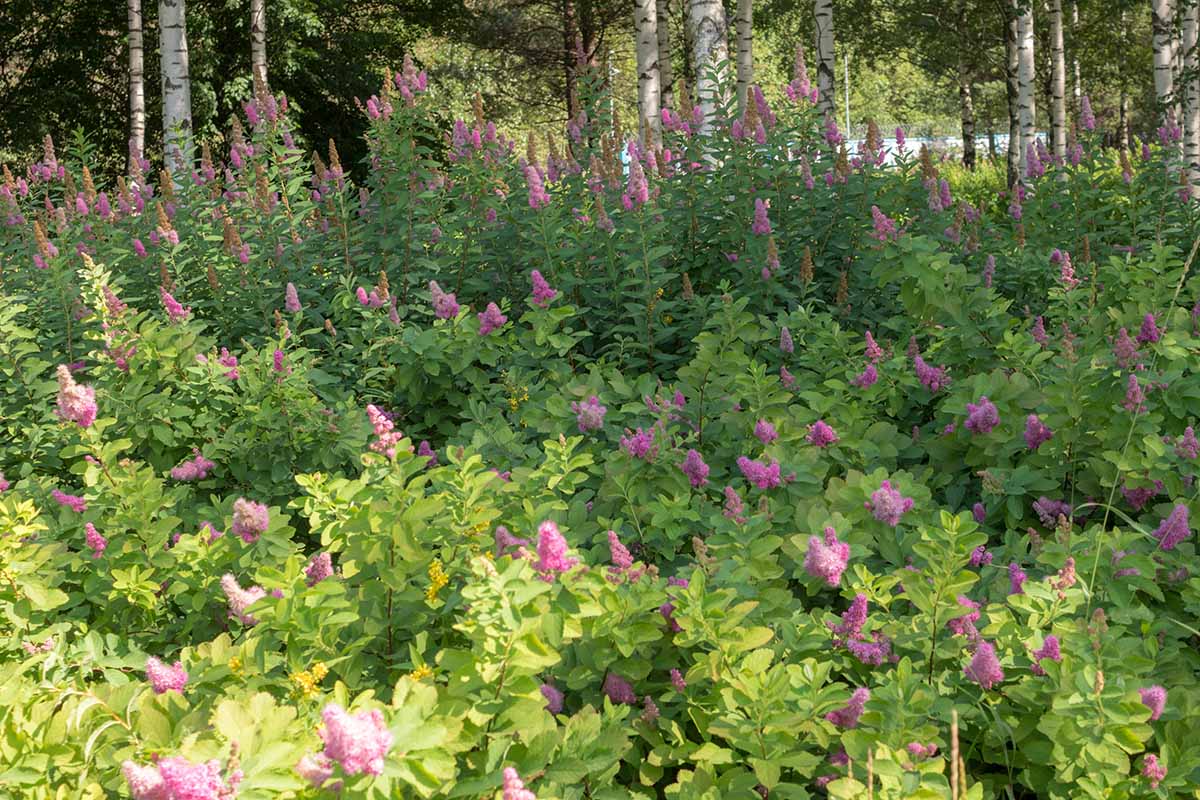
And it’s such a sensible magnificence, with the mounding shrubs providing erosion management, a brief privateness hedge or windbreak, or an vital nectar and pollen supply for hummingbirds and pollinator gardens.
I warning you to not plant this beautiful shrub in a high-profile entrance mattress or walkway, although, until you’re ready to see a large dormant plant with no leaves all through the winter.
Even the cultivars which are hardy in Zone 3, the place temperatures might dip to -40°F, don’t present visible curiosity within the chilly months.
If you wish to plant it in a outstanding spot, think about using a container so you may roll it out of the general public eye all through the months of dormancy.
Three seasons of attraction is rather a lot for any plant, so don’t push it by anticipating beauty for a fourth season!
Fast Reference Rising Information
| Plant Kind: | Deciduous perennial flowering shrub | Flower / Foliage Shade: | White, pink/inexperienced, yellow (bronze, burgundy, chartreuse, orange, peach, pink, yellow-green, multicolored in fall) |
| Native to: | East Asia, North America | Upkeep: | Low |
| Hardiness (USDA Zone): | 3-9 | Tolerance: | Alkaline soil, clay soil, deer, drought, onerous freezes, rabbits |
| Bloom Time/Season: | Spring (colourful foliage in fall) | Soil Kind: | Chalk, loam, sand |
| Publicity: | Full solar to half solar | Soil pH: | 6.0-7.0 |
| Spacing: | 2-4 ft | Soil Drainage: | Nicely-draining |
| Planting Depth: | High of root ball even with floor degree | Attracts: | Bees, butterflies, hummingbirds, different pollinators |
| Peak: | 2-4 ft | Companion Planting: | Hydrangeas, yarrow |
| Unfold: | 2-4 ft | Makes use of: | Beds, borders, butterfly gardens, containers, hedges, mass plantings, pollinator gardens, walkways |
| Progress Fee; | Average to quick | Household: | Rosaceae |
| Water Wants: | Average | Genus: | Spiraea |
| Pests & Illnesses: | Aphids, scale, spider mites; hearth blight, leaf spot, powdery mildew, root rot | Species: | Betulifolia |
A Burgeoning Affection for Birchleaf Spirea
I can’t assist however enthusiastically suggest this easy-care shrub with three-season curiosity.
And I do know gardeners in Zones 3 to 9 will welcome the suggestion, particularly anybody who needs to draw springtime pollinators.
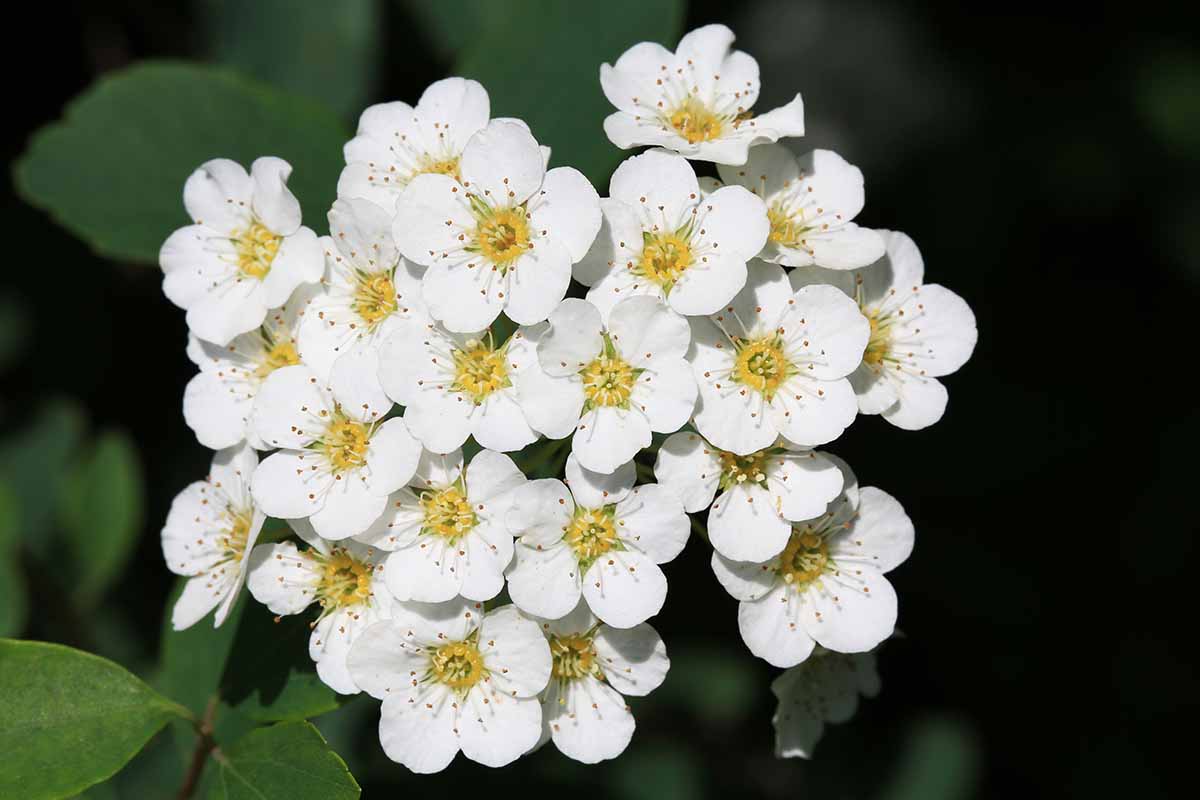
Are you already rising birchleaf spirea, or would possibly you could have a query about its progress and care that hasn’t been coated on this information? Whether or not you want rising recommendation or wish to share an expertise, we welcome your enter within the feedback part under.
To increase your information of this genus of robust however lovely flowering shrubs, learn these spirea guides subsequent:
Thank you for being a valued member of the Nirantara family! We appreciate your continued support and trust in our apps.
-
Nirantara Social - Stay connected with friends and loved ones. Download now:
Nirantara Social

-
Nirantara News - Get the latest news and updates on the go. Install the Nirantara News app:
Nirantara News

-
Nirantara Fashion - Discover the latest fashion trends and styles. Get the Nirantara Fashion app:
Nirantara Fashion

-
Nirantara TechBuzz - Stay up-to-date with the latest technology trends and news. Install the Nirantara TechBuzz app:
Nirantara Fashion

-
InfiniteTravelDeals24 - Find incredible travel deals and discounts. Install the InfiniteTravelDeals24 app:
InfiniteTravelDeals24

If you haven't already, we encourage you to download and experience these fantastic apps. Stay connected, informed, stylish, and explore amazing travel offers with the Nirantara family!
Source link


